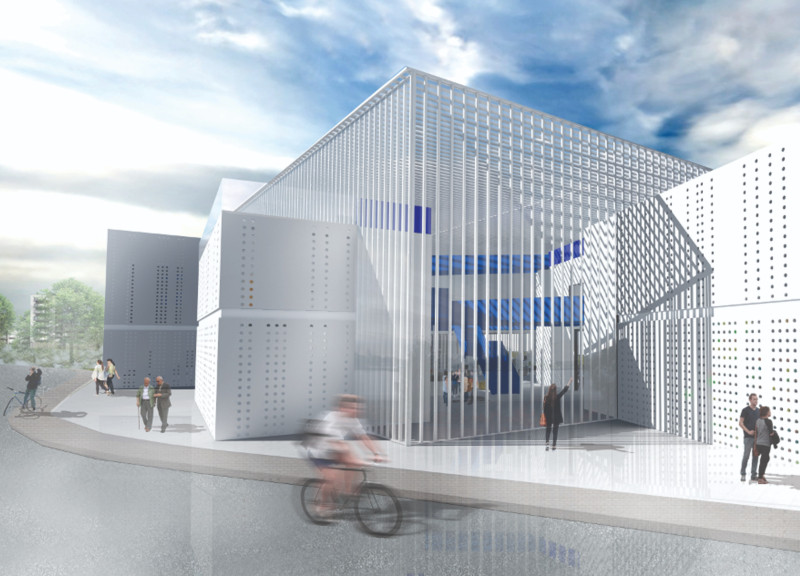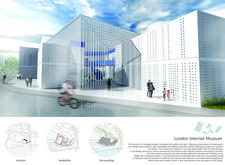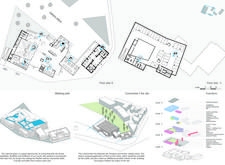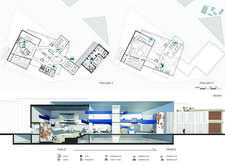5 key facts about this project
**Overview**
Located in London, the Internet Museum is designed to reflect the complex nature of the digital world, serving as a space for education and engagement with the history and evolution of the internet. Its architectural concept captures the fluidity and adaptability inherent in technology, integrating interactive features that enhance the visitor experience. The design considers the site’s historical context, aiming to connect with the surrounding environment and encourage interaction among users.
**Spatial Strategy and Engagement**
The interior spatial organization promotes exploration and movement, characterized by ramps and interconnected pathways that enhance accessibility and foster an inviting atmosphere. Public areas, including a library, café, and exhibition halls, are distinctly delineated from private spaces such as technical suites, ensuring optimal functionality while maintaining a communal feel. The museum’s layout facilitates dynamic exhibitions and user interactions, with movable walls and interactive panels that allow for adaptable displays and experiences, reflecting the ever-evolving nature of technology.
**Materiality and Sustainability**
The material choices are critical to the museum’s identity, employing concrete for structural integrity, glass for transparency and natural illumination, and steel for a contemporary aesthetic. Perforated metal panels enhance the façade, creating visual interest and interaction with visitors, while photovoltaic cells contribute to sustainability goals by powering responsive installations. The integration of eco-friendly materials and the careful consideration of natural light exemplify a commitment to environmental responsibility, ensuring that the design is both functional and sustainable.






















































